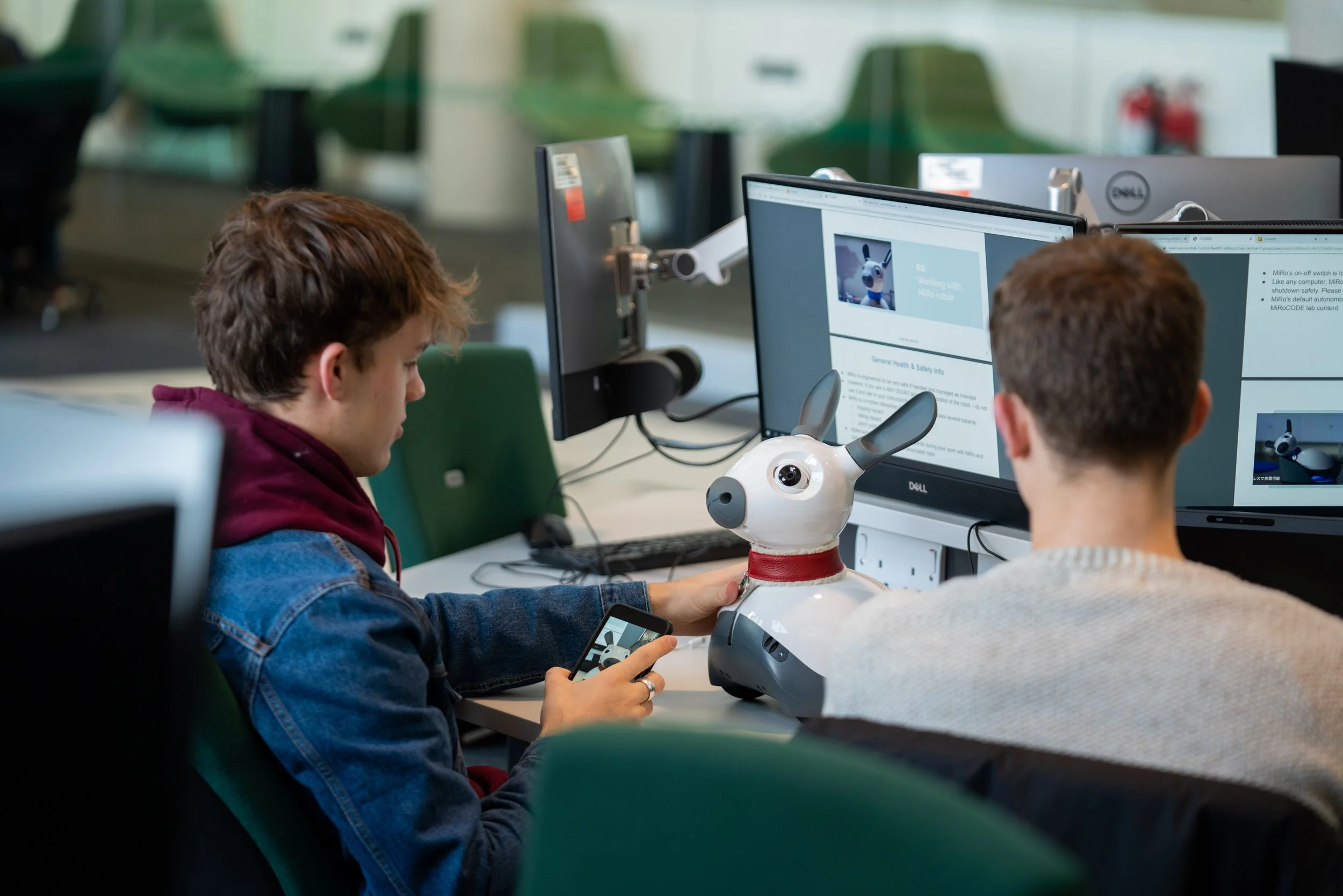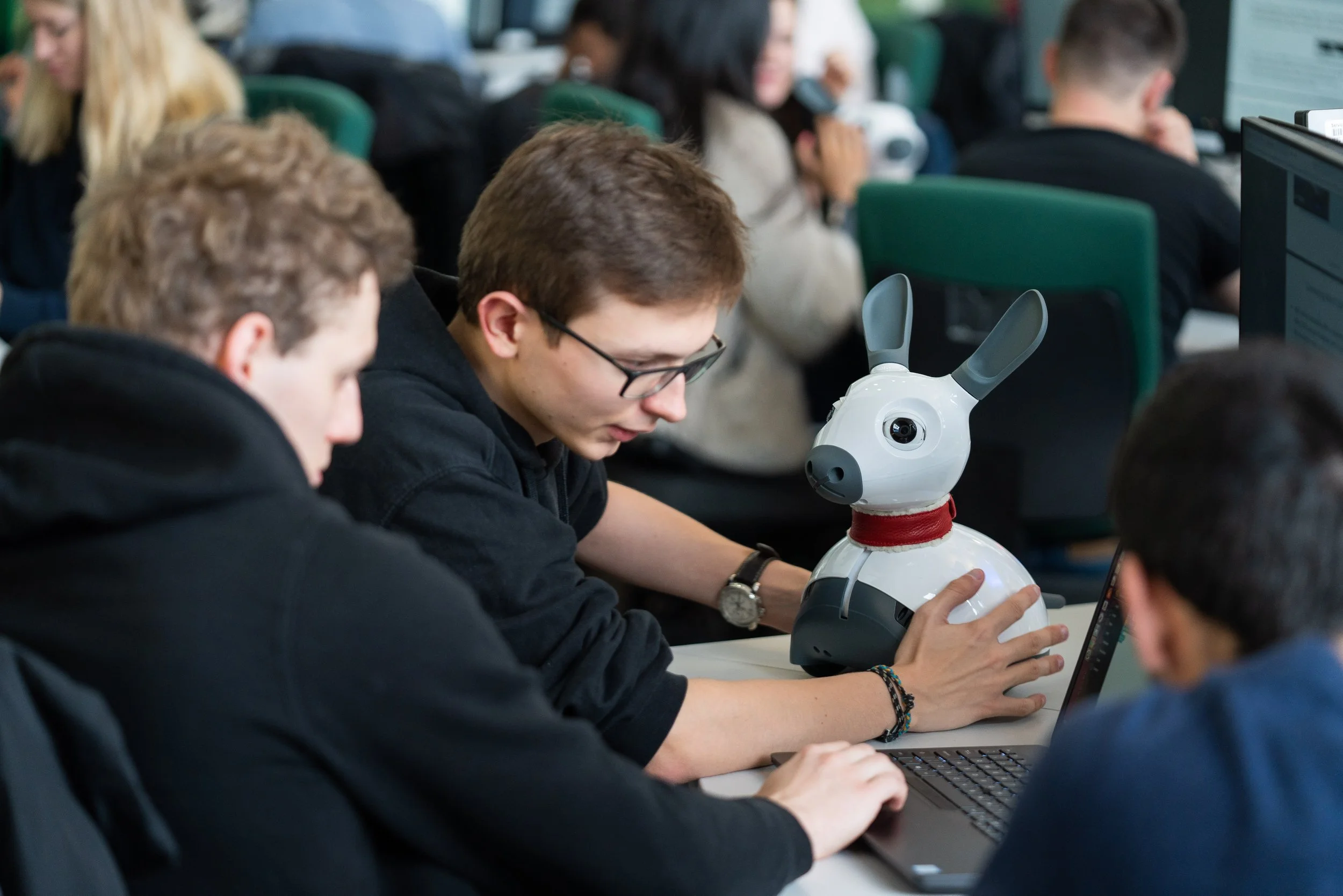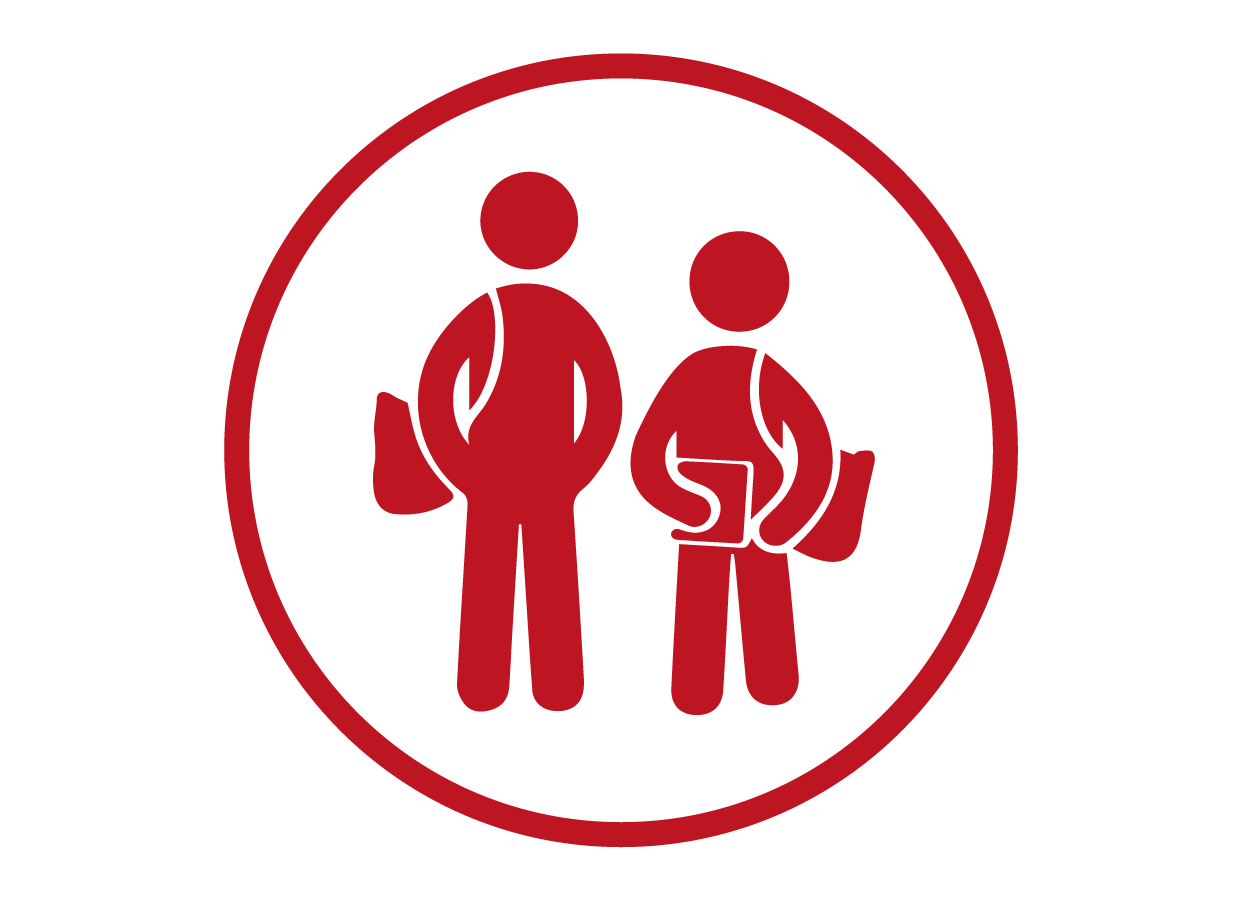University Teaching
MiRo-E and MiRoCLOUD supports students around the world to develop their coding skills and find their passion.
Students expect higher education to help them find their element, the thing that sparks their interest, that encourages creativity and learning through curiosity. By using MiRo-E and MiRoCLOUD, students have fun, and are motivated to think out-of-the-box and code creatively. Learning with MiRo involves solving challenges, playing games, completing term-long challenges, team working and programming actions that will solve a real problem. All invaluable skills for their coding journey.
What is MiRo-E?
MiRo-E is an animal-like companion robot with a complex and sophisticated sensor array that can be utilised in a range of projects and teaching scenarios.
MiRo is a mobile robot that works out of the box with no assembly required apart from connecting the battery.
Ideal as a teaching robot, MiRo has high levels of sensing and actuation - high-quality stereo vision, different microphones, touch sensing including numerous functional and expressive ways of moving.
What is MiRoCLOUD?
MiRoCLOUD is an online learning platform providing full access and management to our MiRoCODE programming and simulation software. MiRoCLOUD is used to program the MiRo-E robot.
Students learn that there is no unique right way to program MiRo-E. They have to be curious and creative in programming and algorithm design to meet the challenge.
Coding MiRo brings the robot to life. Seeing the results as behaviours motivates students to try something new, adapt, develop, redesign and explore.
Fully in the cloud, coding can happen anywhere by anyone.
“All the sensors that are on MiRo, as well as its actuators, and with all the open-source software that is around, you can build in a lot of power. Just the power of MiRo and the MiRoCLOUD environment means that the sky’s the limit.”
Why choose MiRo-E and MiRoCLOUD for teaching?
Ideal for undergraduate projects, they provide a versatile and accessible platform for a huge range of projects and allowing cross-curricula thinking.
MiRoCLOUD enables large numbers of students to follow this creative, challenge-based learning approach and have the satisfaction of seeing working code on a robot with a wide range of sensors.
The MiRo-E robot and MiRoCLOUD platform offers an engaging offline and online learning experience. Supporting remote and on-campus learning.
MiRoCLOUD uses a full physics simulator to represent the MiRo-E robot in the real world. Students can learn computer vision in the simulation environment including various other forms of sensing. Program and observe how MiRo interacts with its environment, people and objects.
MiRoCLOUD runs entirely in the cloud so no installation process is required. Students can code and test from anywhere in the world with an internet connection and then run their code on the MiRo robot based in the lab.
MiRoCLOUD supports academic staff by enabling on-campus and online learning. On-site groups are smaller and more manageable, without compromising the student learning experience.
MiRo is small and portable, enabling in-situ project testing.
“MiRoCLOUD is game-changer in planning for the future. ”
“One advantage of MiRoCLOUD is that students can just open a browser window on any device, anywhere, and log into their account with access to a fast simulation. Everyone has the same reliable experience.”
FOR STUDENTS
• MiRo robot is advanced yet accessible and engaging
• Teaching independence and self-learning - provides ownership of creations
• MiRoCLOUD simulator allows immediate testing and bug fixing, promoting self-correcting
• Encourages creativity
FOR COURSE LEADERS
• Intuitive platform allows student-led learning
• Offline and online learning allows remote teaching
• Robot works out of the box without any complex assembly
• Provides motivation to students of all abilities and backgrounds and allows skill build up
• Automates student user data collection
Hear from our users.
Discussion around University Teaching and Blended Learning
Interview with professors and lecturers at the University of Sheffield about the learnings and challenges of teaching computer science remotely and the benefits of using MiRo and MiRoCLOUD.
In the department of computer science, for the first-year level one teaching and in particular for the module on machines and intelligence, we use MiRoCLOUD quite extensively to illustrate some of the concepts from the module we teach. We have been able to use MiRo’s and MiRoCLOUD to do some monitoring detection in a condition, both in the simulation and in the real world.
The students are able to interact with the robots so they could have a hands-on experience. They used MiRoCLOUD to work in the simulator and when they were ready to put their code on the robot, they just connect to the robot.
Computer Science Teaching at the University of Sheffield
Words from Alex Lucas who runs the "Introduction to Programming'' course at the University of Sheffield with over 300 students.
With MiRo-E and MiRoCLOUD, during the pandemic, sessions were done able to be completed online. If possible, students were able to visit the Diamond and play with the real MiRos, using the very same codes they developed in MiRoCloud while working in simulation.
These sessions were well received by the students, who particularly appreciated the flexibility of this approach and learning the differences between programming in simulation and in reality. Even students who were based abroad could join in the sessions without any significant interruption due to the online programming platform MiRoCLOUD and Sheffield’s own remote streaming MiRo-E robot set-up.
Weekend Hackathon at Edinburgh Centre for Robotics
The weekend Hackathon is another example of student centred learning. Organised by students from the Edinburgh Centre for Robotics at Heriot-Watt and Edinburgh Universities for students and the general public. They took over a hall for a weekend and offered pizza, refreshments and even anterooms for sleep.
Participants were able to engage in fun, self-created challenges to see what could be done. The games included ‘Simon Says’ and ‘MiRo football’. Programming MiRo to follow a leader and putting two robots in front of each other created interesting interactions, and practical demonstrations of feedback.
A judging and demonstration session at the end provided an element of competition and informal motivation to an essentially social event. People met, developing both their networks and their knowledge.
Used by Universities all over the world.
Starting its life as a developers tool has allowed MiRo to grow and improve. Professors and educators all over the globe have used it as a tool to teach their students about robotics. Relaunching MiRo-E as an educational tool purely for the classroom environment is the next leg of the journey for MiRo, and it is already making an impact.







